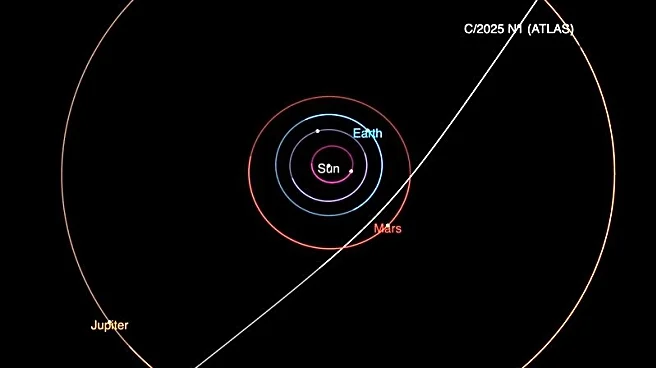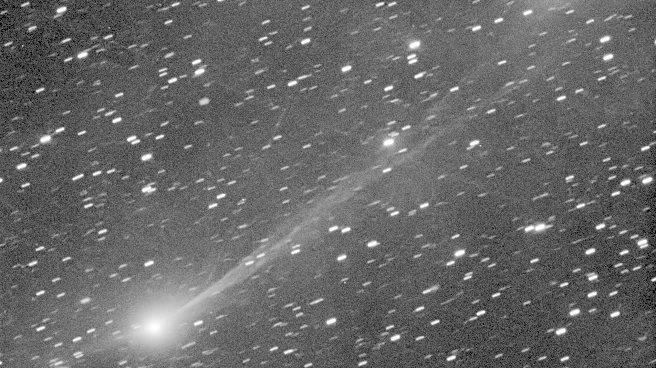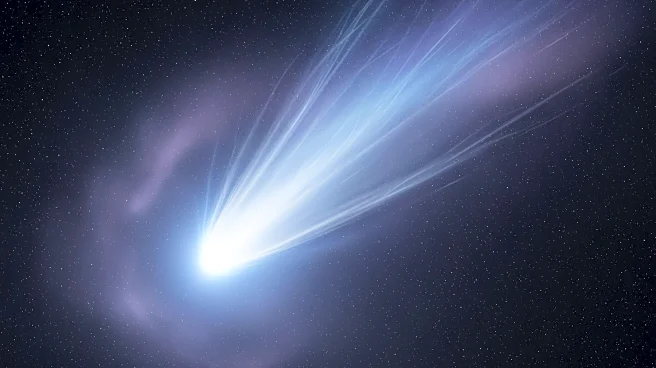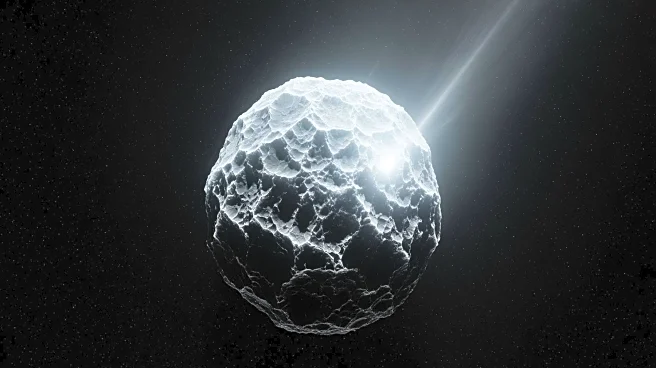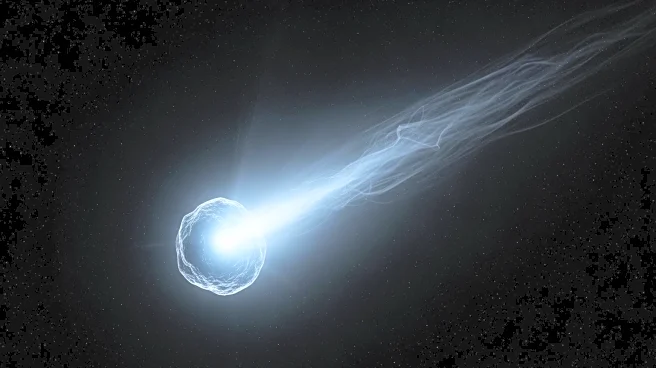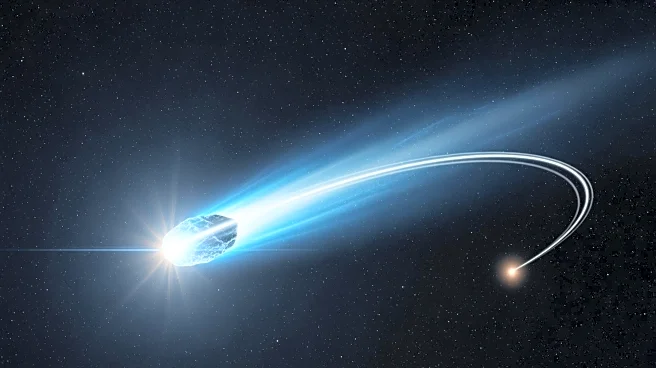What's Happening?
Comet C/2025 K1 ATLAS has dramatically fragmented into three large pieces, providing a rare spectacle for astronomers and enthusiasts. The comet, originating from the Oort Cloud, was first observed in May
2025 by astronomers at the El Sauce Observatory in Chile. The fragmentation was detected following two outbursts of light in late October and early November, a common occurrence as comets approach the Sun and disintegrate due to solar radiation and gravity. The event is part of the NASA-funded Asteroid Terrestrial-impact Last Alert System (ATLAS), which aims to identify potential Earth-impacting objects. The Virtual Telescope 2.0 Project, founded by Italian astronomer Gianluca Masi, offers public access to live footage of the comet, which will make its closest approach to Earth on November 25.
Why It's Important?
The fragmentation of Comet C/2025 K1 ATLAS presents a unique opportunity for scientific study and public engagement. Such events allow astronomers to better understand the composition and behavior of comets, which are primarily made of rock, ice, and dust. Observing these phenomena can provide insights into the early solar system and the processes that govern cometary disintegration. For the public, it offers a chance to witness a rare cosmic event, enhancing interest in astronomy and space exploration. The event also underscores the importance of systems like ATLAS in monitoring celestial objects that could pose a threat to Earth.
What's Next?
As Comet C/2025 K1 ATLAS continues its journey through the solar system, scientists will monitor its fragments to gather data on their trajectory and composition. The Virtual Telescope 2.0 Project will provide live coverage of the comet's closest approach to Earth, allowing both scientists and the public to observe the event. This ongoing observation will contribute to the broader understanding of cometary behavior and the potential risks they pose. Additionally, the data collected may inform future missions aimed at studying or mitigating threats from similar celestial objects.


